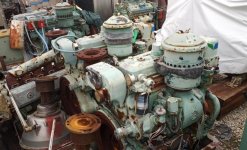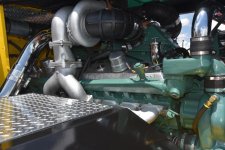JHOLLAND1
Titanium
- Joined
- Oct 8, 2005
- Location
- western washington state
new release-- nicely presented --- up to date
History of Detroit Diesel | Diesel History Episode 3 - YouTube
History of Detroit Diesel | Diesel History Episode 3 - YouTube



 . Yea its turbo charged. Some configurations place the turbo between the two exhaust manifolds, which is mid engine. My eyes drifted there when I wrote it.
. Yea its turbo charged. Some configurations place the turbo between the two exhaust manifolds, which is mid engine. My eyes drifted there when I wrote it.








 man they sound good.
man they sound good.


